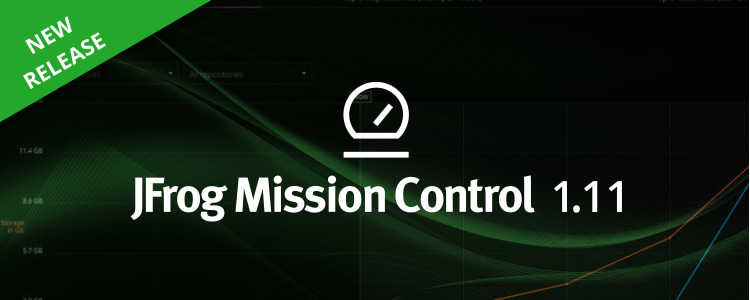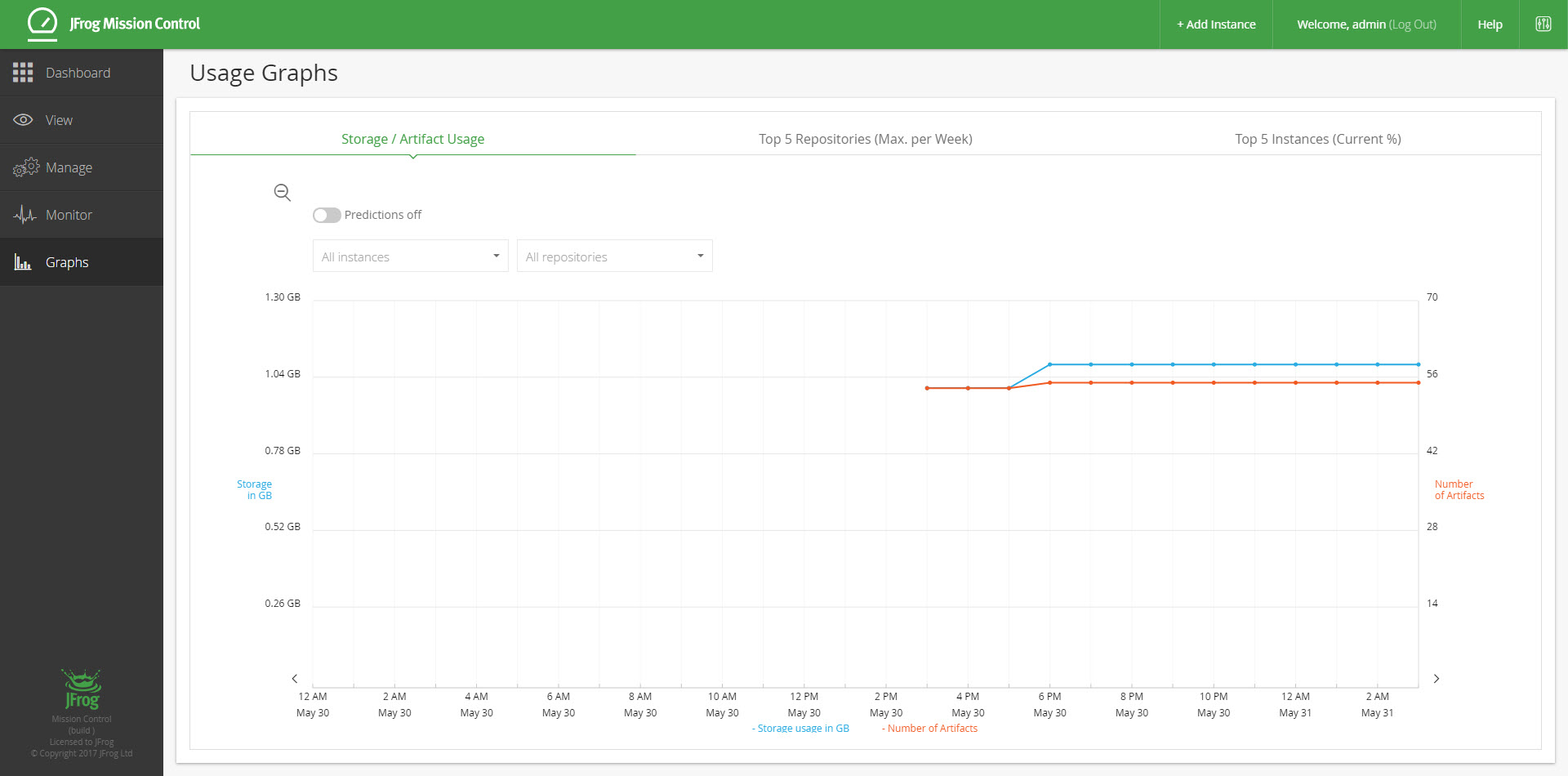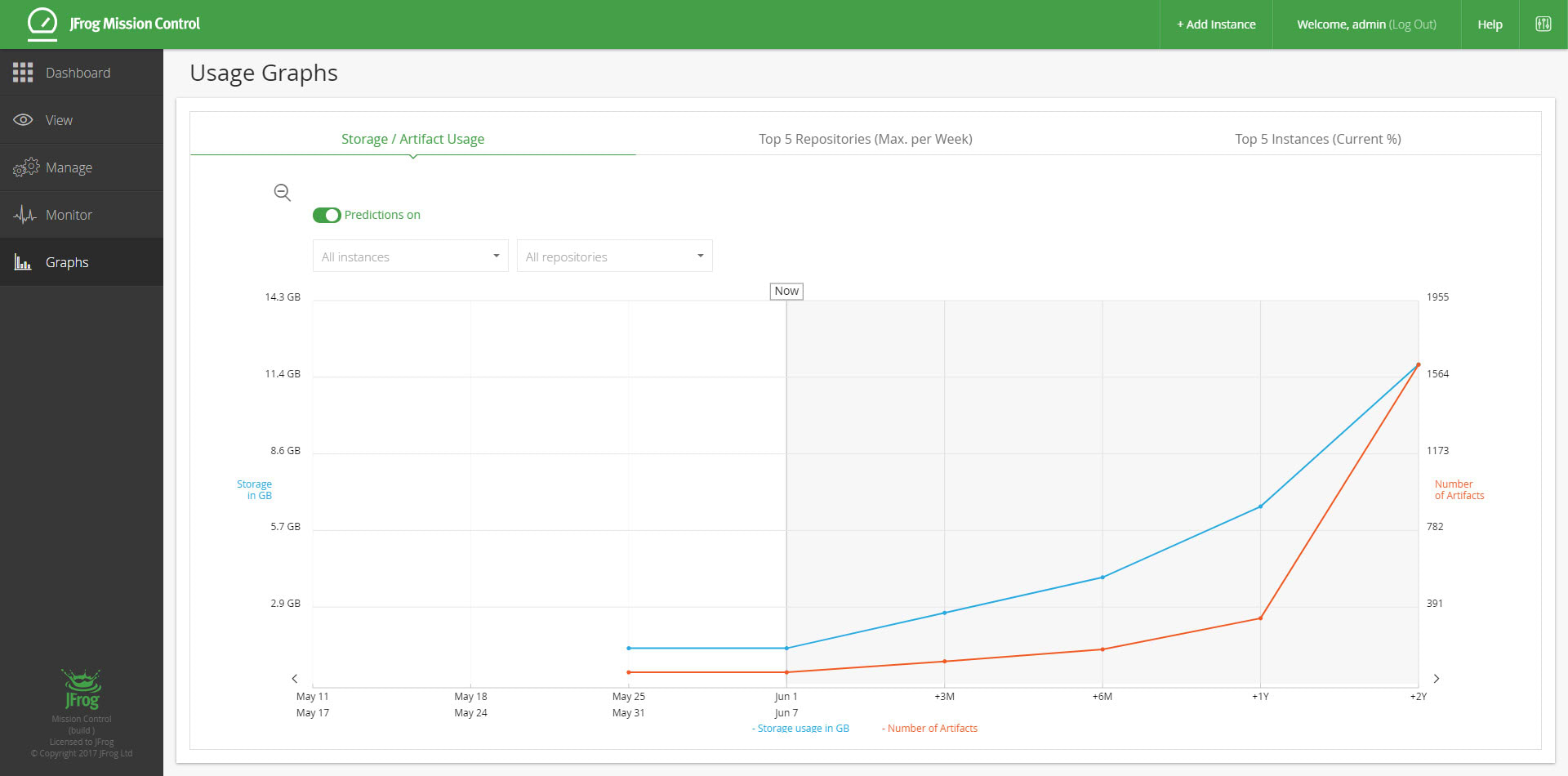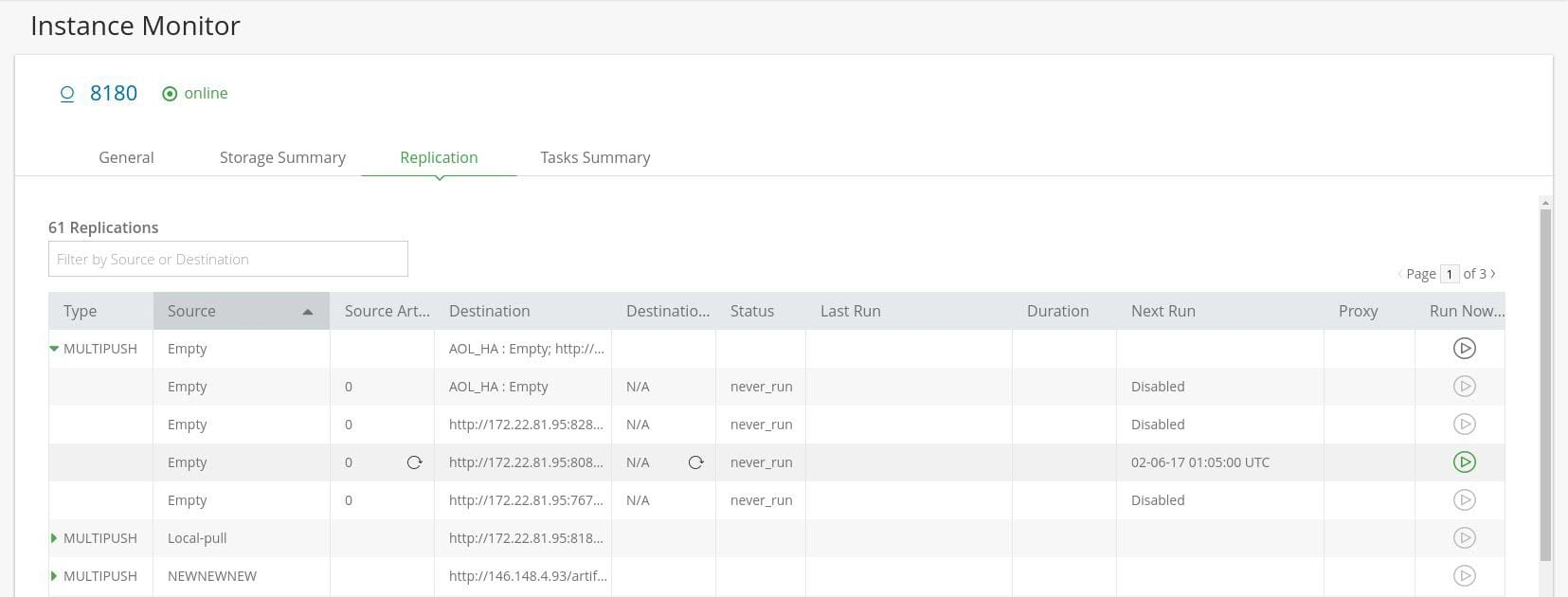Track Your Resource Allocation Globally

The recent release of JFrog Mission Control v1.11 has opened up a new dimension in the management of your global artifact workflow. For the first time, Mission Control lets you track and monitor how your resources are being used with the new Storage / Artifact Usage graph.

Knowing how much storage the Artifactory instances you are managing are using, and how many artifacts they host at any time makes it easier for you to detect surges in usage and bottlenecks in artifact flow. And with the ability to zoom in from the level of all repositories in all instances down to a specific repository in a specific instance, you can easily weed out any “rogue” instances or repositories. Seeing peaks of activity will indicate where you might want to set usage policies on specific instances or repositories so that future surges in usage will generate notifications you can act on. So yes, tracking historical data is great, but looking into the future is even better.
Predictive Analysis
Predictive graphs are not new to Mission Control. They have been around for a while, but their application to the new usage graph is particularly useful, especially since you can use filters to focus in on any specific instance or repository. Understanding how your storage or artifact usage is going to look 3, 6, 12 and 24 months into the future helps you prepare your overall resource strategy, and how to allocate those resources internally among the different instances you manage.

And a nice perk with predictions is that you can switch it on when you’re planning for the future, and switch it off when you’re more concerned with your daily numbers.
Replication at Will is DR-Friendly
Mission Control lets you configure replication relationships between the different Artifactory instances that you manage, and view their status through the Replications tab of the Instance Monitor. The only problem is that replication is either event based, or controlled by a cron expression, and this presents a limitation when setting up disaster recovery. The most resource-intensive phase in DR is when you need to synchronize the relevant repositories of the DR Master and Target pairs. You don’t want to have to depend on an event or cron expression for that. So another little perk of Mission Control 1.11 is that once replication relationships are set up, you can now invoke the replication at any time using the Run Now button for any repository in the list.

At our recent yearly user conference, swampUP, we announced the JFrog Platform. The reason I mention this here is that going forward, Mission Control will continue to have an increasingly important role monitoring and managing resource allocation for all the different elements of the platform. Having graphs that show both historical data along with predictions for future resource requirements is going to be an invaluable asset for any administrator managing the tools and resources for a software development organization.
If you aren’t using Mission Control yet, this is a good time to start. Download Mission Control.



